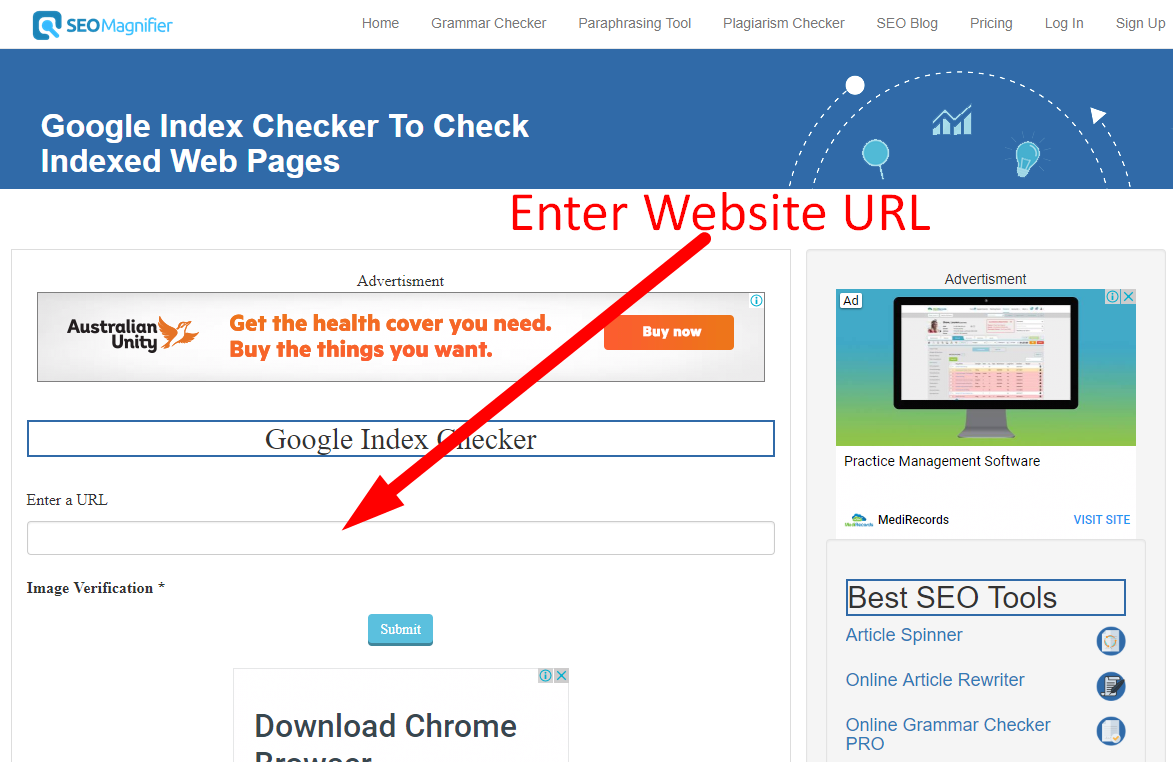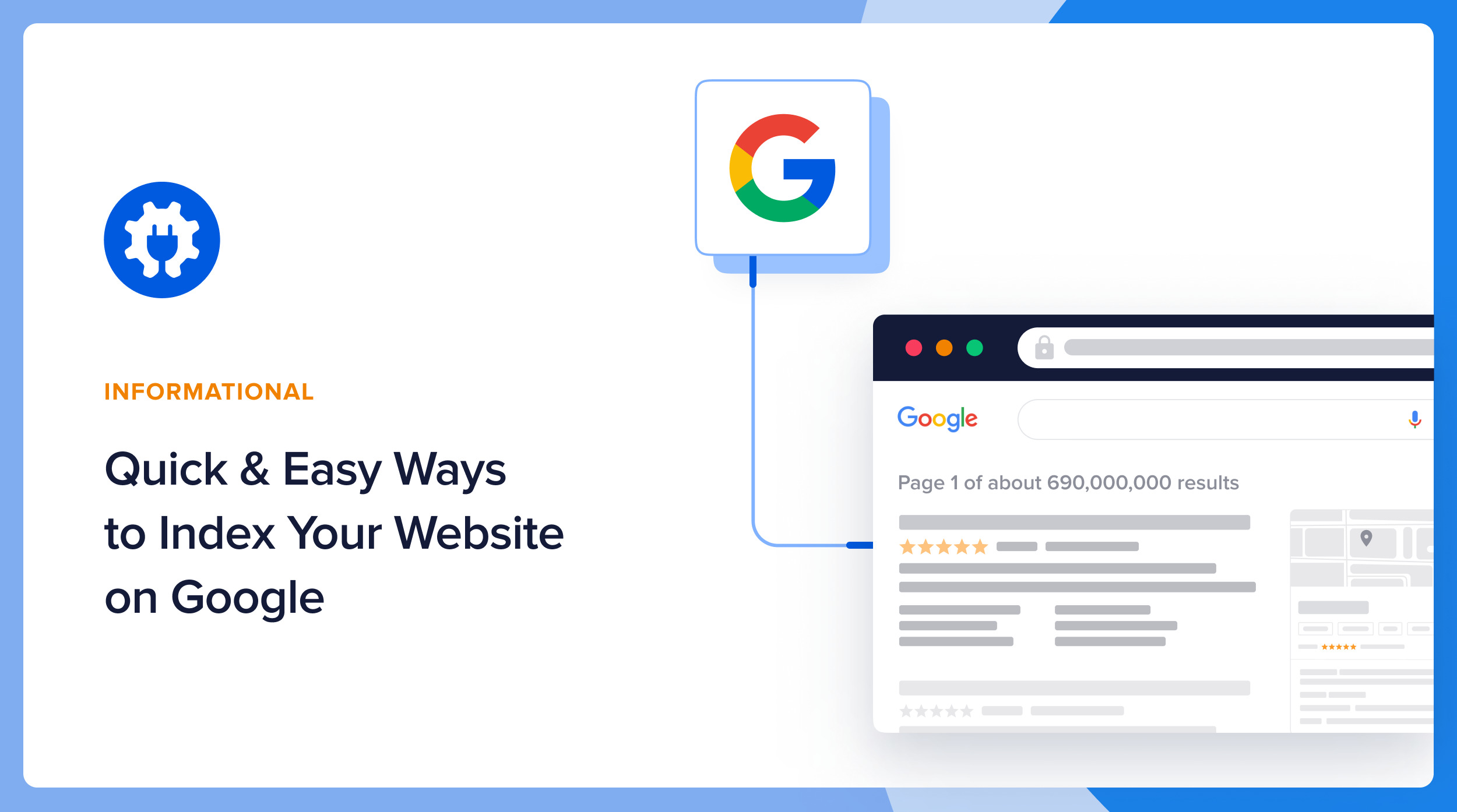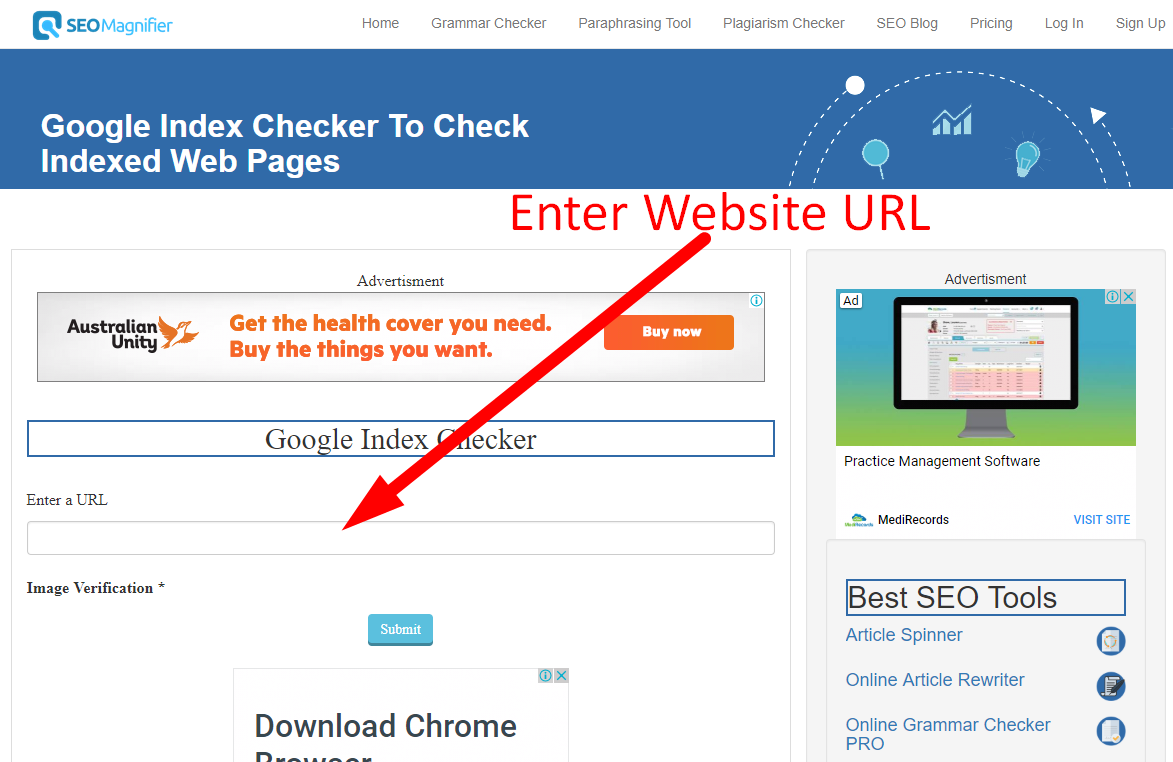In today’s digital landscape, maintaining a strong online presence is crucial for any website owner or digital marketer. One vital aspect of this is ensuring your site is properly indexed by Google, as this determines whether your content appears in search results. Understanding your Google index status can help you strategize your SEO efforts effectively. This article delves into how to use online tools to discern your website’s indexing status efficiently. From identifying indexation issues to tracking changes in real time, these tools provide valuable insights that can guide your optimization strategies and enhance your website’s visibility online.
Step-by-Step Guide to Checking Google Index Status with Online Tools
1. Understanding Google Indexing
Google indexing refers to the process by which Google crawls and stores web pages in its search database. Indexed pages are the ones Google has visited, analyzed, and deemed valuable enough to be returned in search results. Pages that are not indexed do not appear in search. By understanding whether your site or page is indexed, you can ensure visibility and accessibility to users searching for related content.
2. Utilizing Google Search Console
Google Search Console is a free tool provided by Google, offering insights and control over how your website interacts with the search engine. To check your index status, log into Google Search Console, select your property, and navigate to the Index section. Here, you can spot any indexed pages, see total index count, and monitor issues with non-indexed pages. From resolving coverage issues to submitting sitemaps, the insights provided here are crucial for maintaining and improving visibility.
3. Online Tools for Index Status Verification
Numerous online tools facilitate quick index status checks to ensure your pages are Google-ready. Tools like URL Inspection Tool, Copyscape, and others allow you to paste your URL and check its index status. These tools highlight discrepancies between intended appearances and actual indexing. While Google Search Console is comprehensive, third-party tools can offer additional checks or user-friendly interfaces to cross-verify index statuses.
| Tool Name | Features | Pros | Cons |
|---|---|---|---|
| Google Search Console | Free, Direct insights from Google, Index tracking | Accurate, Comprehensive | Steep learning curve for new users |
| URL Inspection Tool | Quick URL checks, Simplicity | Fast, User-friendly | Limited to individual URL checks |
| Copyscape | Duplicate content analysis, Plagiarism checks | Effective for checking uniqueness | Requires a paid plan for full features</td> |
4. Common Issues Preventing Indexing
Several factors could prevent your web pages from being indexed. Issues like robots.txt restrictions, noindex tags, server errors (like 404 or 500 series), or lack of significant content, can hinder indexing. Using online tools to regularly monitor these aspects helps identify and address problems quickly. The Coverage Report in Google Search Console flags such issues effectively, allowing you to fix and request re-indexing.
5. Best Practices for Ensuring Pages Get Indexed
To optimize your website’s indexing, ensure your content is valuable and unique. Submit a sitemap to Google Search Console, use meta tags correctly, and improve website loading speeds. Ensure all internal links function and drive Google’s crawlers through your site efficiently. Finally, share content via social media platforms and external sites to encourage crawling by Google bots, maximizing the chances of getting indexed faster and more reliably.
How to check indexing status in Google?

To check the indexing status in Google, you will need to use some specific tools and follow certain procedures. Here is how you can effectively determine whether your pages are indexed by Google and gather more insights into their performance.
Google Search Console
Google Search Console is a free tool provided by Google that helps you monitor your website’s presence in Google search results. It offers detailed information about indexing status.
– Verify Your Website: First, you must have your website verified in Google Search Console. If not, log in and follow the verification process.
– Go to the Coverage Report: Once logged in, navigate to the ‘Coverage’ section. This report provides data about how many URLs have been indexed, which ones are excluded, and possible reasons for exclusion.
– Inspect URL Tool: Use the URL inspection tool for specific pages. Enter a URL to see if it is indexed and view information about any crawling or indexing issues.
site: Operator in Google Search
You can also check the indexing status of your pages directly using a basic Google search with the site: operator.
– Open Google: Go to google.com in your web browser.
– Use the site: Operator: Enter `site:yourwebsite.com` in the search bar to see how many pages Google has indexed. Replace ‘yourwebsite.com’ with your actual website URL.
– Analyze the Results: The results displayed will show you which pages Google recognizes and has indexed from your site.
Log File Analysis
Analyzing your website’s server log files can give you insights into how Google’s crawler, Googlebot, navigates your site.
– Access Server Logs: Obtain access to your server logs, which are often available through your hosting provider or through a log management service.
– Identify Googlebot Activity: Look for entries that involve ‘Googlebot’, indicating Google’s crawling activity on your site.
– Review URL Requests: The logs will show which URLs Googlebot has visited, which indirectly informs you about its interest in indexing those URLs.
How to check index online?

To check an index online, you need to understand the different types of indices and the platforms that provide such information. Here’s a detailed guide on how to proceed:
Using Search Engines to Verify Website Indexing
To determine if your website is indexed by a search engine, follow these steps:
- Conduct a Search: Go to a search engine like Google and use the search operator site:yourdomain.com (replace yourdomain.com with your actual domain name) to see if your pages are indexed.
- Analyze the Results: If your website pages appear in the search results, they are indexed. The number of pages that appear can give a rough estimate of your indexed content.
- Use Webmasters Tools: Platforms like Google Search Console provide detailed insights into your website’s index status, allowing you to see which pages are indexed and identify any issues that may prevent pages from being indexed.
Checking Stock Market Indices Online
If you’re interested in tracking stock market indices, here are some steps you can take:
- Select a Financial Website: Use popular financial websites like Yahoo Finance, Bloomberg, or MarketWatch to monitor indices such as the S&P 500 or FTSE 100.
- Navigate to Indices Section: Find the section dedicated to indices. These sites usually have a clear navigation path labelled Indices or Markets.
- Review Index Performance: Look at key data points such as opening and closing values, daily highs and lows, and overall performance trends to assess the index’s status.
Utilizing Index Checking Tools for Websites
For website owners, using specific tools can simplify the index-checking process. Follow these steps:
- Choose a Tool: Utilize tools like Ahrefs, SEMrush, or Moz that offer comprehensive index analysis as part of their broader SEO audit features.
- Enter Your URL: Input your website’s URL into these tools to get detailed reports on which pages are indexed, which are not, and what errors might be preventing proper indexing.
- Analyze the Insight Report: Examine the insights provided to identify trends or issues. These tools often provide recommendations to address issues affecting page indexing.
Which tool is used for website index in Google?

The tool used for website indexing in Google is Google Search Console. This instrument allows webmasters to check the indexing status of their websites and optimize their visibility on Google’s search engine. It plays a crucial role for anyone looking to have their web content accessible through Google Search.
Features of Google Search Console
Google Search Console offers a diverse range of features that are integral for website optimization:
- Performance Reports: These provide insights into search queries, clicks, impressions, and the average position of your website’s links in search results.
- URL Inspection: This feature allows you to check the indexing status of your website’s URLs and let you know how Google views them.
- Coverage Report: It highlights issues and errors affecting the indexing of your site, which includes pages with errors and those successfully indexed.
How to Use Google Search Console for Indexing
Using Google Search Console effectively requires an understanding of its processes:
- Verification: First, verify ownership of your domain in Google Search Console by adding and verifying your domain through a DNS provider or an HTML file upload.
- Sitemaps: Submit a sitemap of your website to provide a map of your site’s structure and ensure all pages are acknowledged by Google’s indexing bots.
- Fix Errors: Regularly check for any errors or warnings reported in the Console and resolve them to improve site performance and indexing.
Benefits of Using Google Search Console
Leveraging Google Search Console comes with several benefits that enhance a site’s online presence:
- Visibility: It aids in understanding and improving how your site is found in Google Search for better traffic.
- Troubleshooting: You can identify and fix indexing errors that affect your website’s performance and indexing status.
- SEO Optimization: Provides insights and keywords data that can be used to refine your site’s SEO strategy continuously.
How do I make sure my website is indexed by Google?

Submit Your Website to Google Search Console
Submitting your website to Google Search Console is a crucial early step in the indexing process. This tool allows you to directly inform Google about your website. Here’s how you can do it:
- Sign Up: If you haven’t already, sign up for a Google Search Console account.
- Add Property: Once logged in, click on Add Property to add your website to the console. You’ll need to verify ownership, which can be done through several methods such as HTML tag, Google Analytics, or via your domain name provider.
- Submit Sitemap: After verifying ownership, navigate to the Sitemap section in the console and submit your sitemap. This helps Google understand the structure of your site and makes indexing more efficient.
Create and Optimize Your Sitemap
A sitemap is an essential file that tells search engines about the pages on your site. Creating and optimizing it can significantly impact indexing speed and coverage.
- Create a Sitemap: Use online tools or plugins to create a structured sitemap file, typically in XML format, that lists all important URLs.
- Optimize Sitemap: Ensure that your sitemap includes all current URLs and does not contain any outdated or unnecessary links. It should be updated automatically when new content is added.
- Link Sitemap: Place a link to your sitemap in the footer of your website so that visitors and search engines can find it easily.
Enhance Site Structure and Internal Linking
Improving your site’s architecture and internal linking benefits both users and search engines, aiding efficient crawling and indexing.
- Organize Content: Structure your site’s content hierarchically with clear categories and subcategories to help search engines understand the importance of your pages.
- Use Descriptive URLs: Create descriptive and readable URLs for all your pages. These should accurately reflect the content and keywords of each page.
- Implement Internal Links: Strategically include internal links within your content to guide search engines and users to related or important pages, enhancing overall crawlability.
Frequently Asked Questions
How can I check if my website is indexed by Google?
To verify if your website is indexed by Google, you can use several online tools that provide insights on your site’s indexing status. One of the easiest ways is to use Google Search itself by entering site:yourwebsite.com in the search bar. This query will show you all the indexed pages of your website. However, for a more comprehensive analysis, you can use tools like Google Search Console, where you can not only check the indexing status but also see any potential errors hindering the indexing process. Signing up is free and it gives you access to various tools and reports on your website’s visibility in Google search engine results.
What is Google Search Console and how does it help in checking index status?
Google Search Console is a robust tool offered by Google that aids in monitoring, maintaining, and diagnosing your site’s presence in Google search results. It lets you see which pages are indexed, identify any crawling errors, and understand the keywords your site ranks for. After verifying your website through Search Console, you can access the Coverage report to understand which pages have been successfully indexed and become aware of those that face issues. This insight helps webmasters fix technical problems that could prevent Google from fully indexing their websites, thereby improving their site’s visibility in search engine results.
Are there third-party tools to check Google index status, and how reliable are they?
Yes, there are numerous third-party tools available that can help you check your website’s indexing status and provide additional SEO insights. Tools such as Ahrefs, Moz, and SEMrush offer features that allow you to monitor which of your website’s pages are indexed by Google. These tools aggregate data from various sources, including Google, but it’s important to remember that their accuracy can be subject to the data sources they rely on. Though reliable, these should be used in conjunction with Google Search Console for the most accurate results, as Google’s own data provides the most direct insight into their indexing process.
What should you do if some of your pages are not indexed by Google?
If you find that some of your pages are not indexed by Google, start by checking for common issues such as noindex tags, duplicate content, or insufficient content quality. Use Google Search Console’s URL Inspection tool to examine individual URLs to determine if there are specific errors or directives causing the non-indexing. Improving the quality of content, ensuring your pages comply with Google’s indexing guidelines, and submitting an XML sitemap can also facilitate the indexing process. Additionally, assure there are internal links pointing to those pages to help Google’s crawlers easily discover them. Regular monitoring and optimizing your website’s technical SEO aspects can aid in ensuring more comprehensive indexing by Google.

